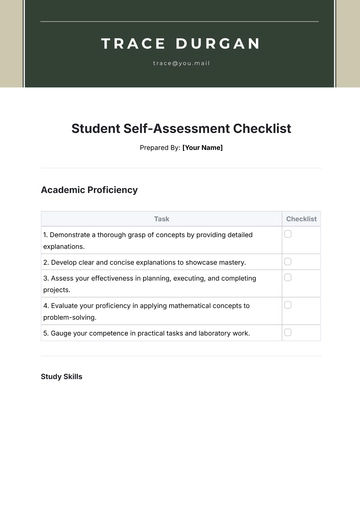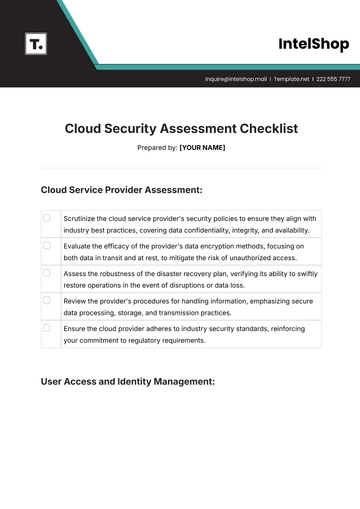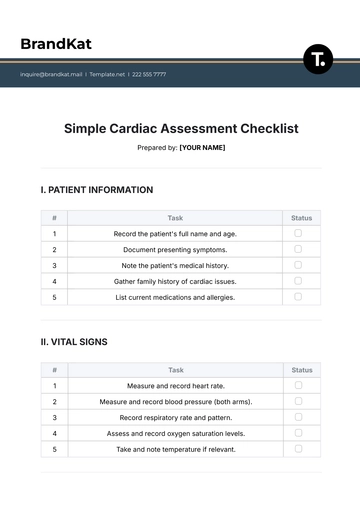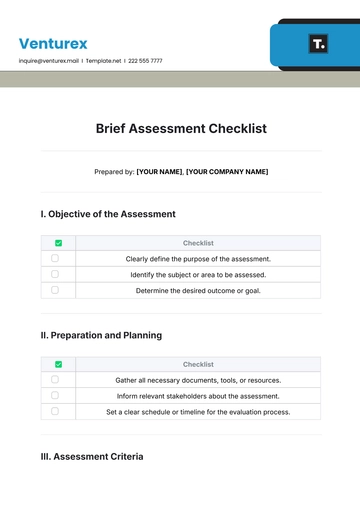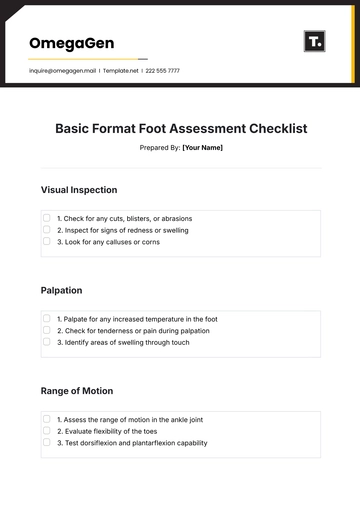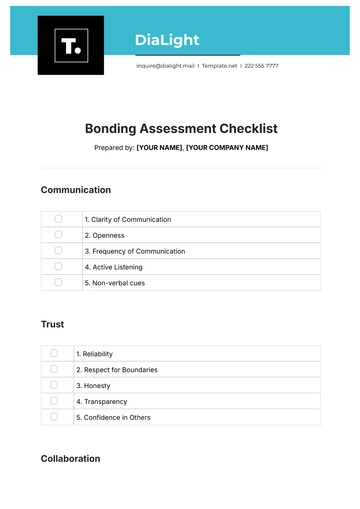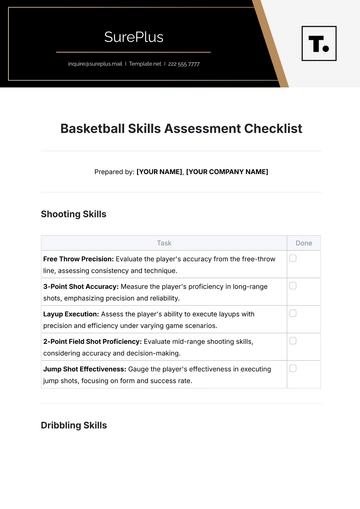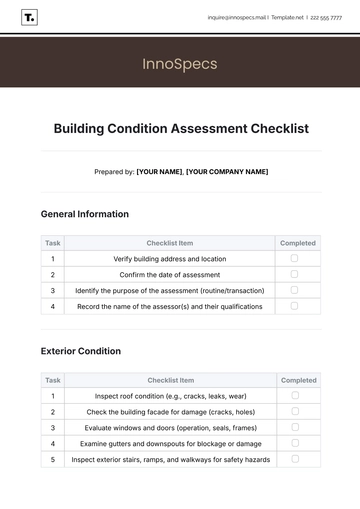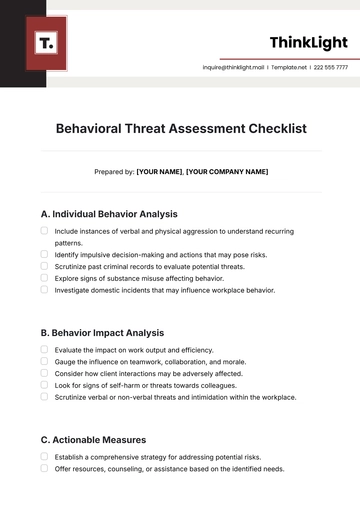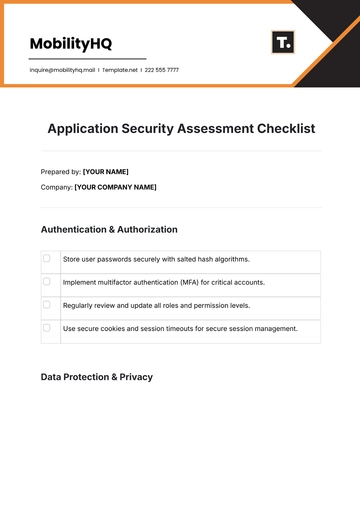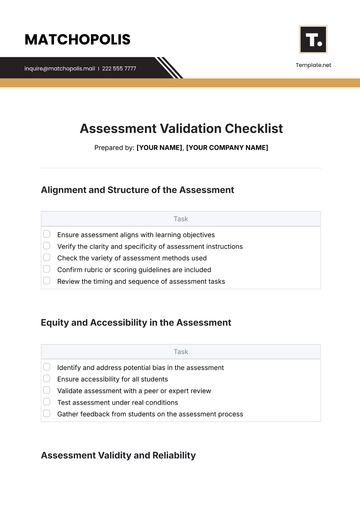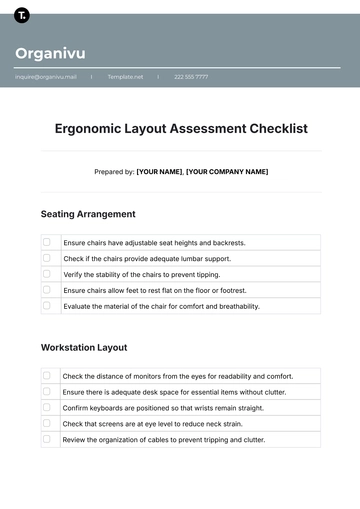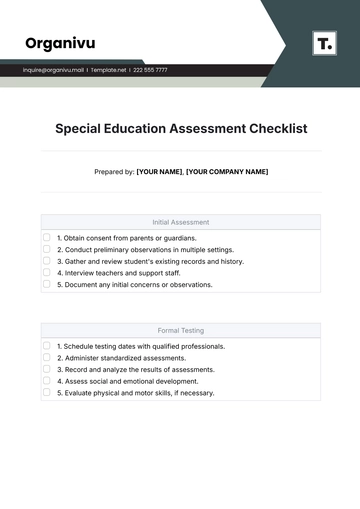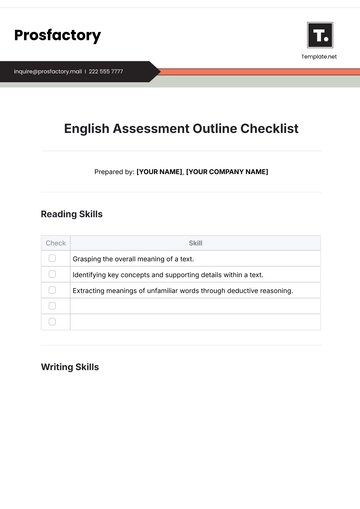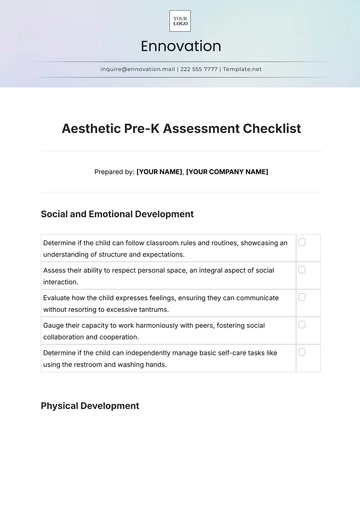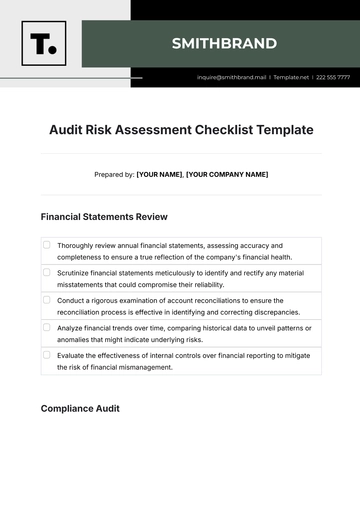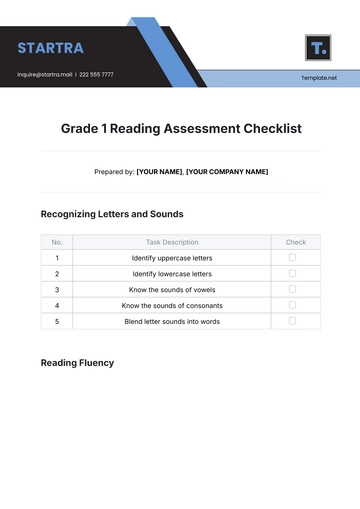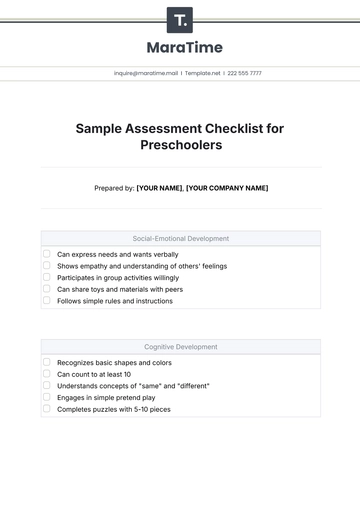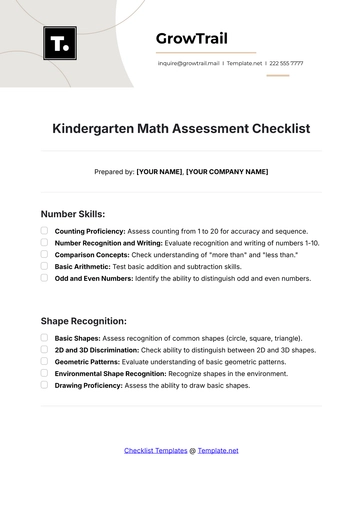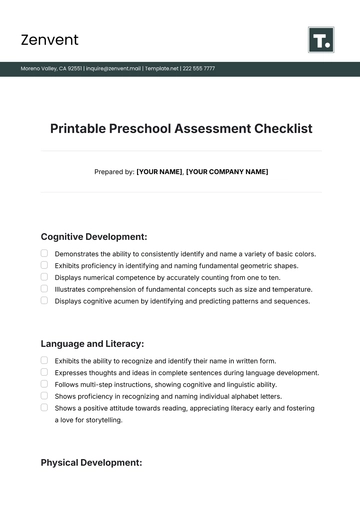Free Nursing Home Slip, Trip, and Fall Prevention Checklist
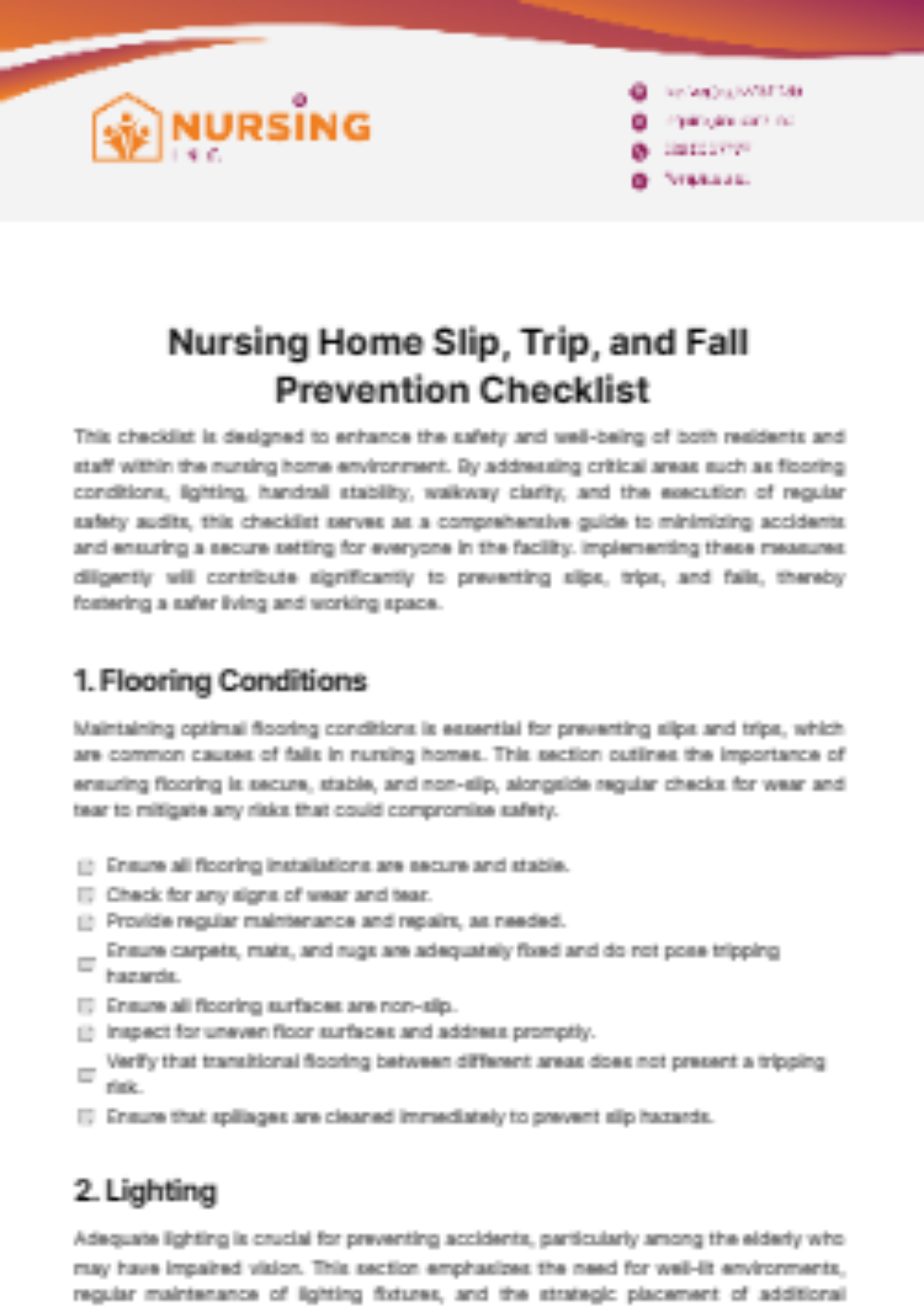
This checklist is designed to enhance the safety and well-being of both residents and staff within the nursing home environment. By addressing critical areas such as flooring conditions, lighting, handrail stability, walkway clarity, and the execution of regular safety audits, this checklist serves as a comprehensive guide to minimizing accidents and ensuring a secure setting for everyone in the facility. Implementing these measures diligently will contribute significantly to preventing slips, trips, and falls, thereby fostering a safer living and working space.
1. Flooring Conditions
Maintaining optimal flooring conditions is essential for preventing slips and trips, which are common causes of falls in nursing homes. This section outlines the importance of ensuring flooring is secure, stable, and non-slip, alongside regular checks for wear and tear to mitigate any risks that could compromise safety.
Ensure all flooring installations are secure and stable.
Check for any signs of wear and tear.
Provide regular maintenance and repairs, as needed.
Ensure carpets, mats, and rugs are adequately fixed and do not pose tripping hazards.
Ensure all flooring surfaces are non-slip.
Inspect for uneven floor surfaces and address promptly.
Verify that transitional flooring between different areas does not present a tripping risk.
Ensure that spillages are cleaned immediately to prevent slip hazards.
2. Lighting
Adequate lighting is crucial for preventing accidents, particularly among the elderly who may have impaired vision. This section emphasizes the need for well-lit environments, regular maintenance of lighting fixtures, and the strategic placement of additional lighting to enhance visibility and safety throughout the facility.
Ensure all areas are well-lit.
Conduct regular checks on light fixtures.
Replace any flickering or dimmed bulbs.
Ensure night lights are placed in necessary areas.
Provide additional lighting in staircases and hallways.
Assess the need for task lighting in specific areas like reading spots.
Ensure emergency lighting is functional and tested regularly.
Install motion-sensor lights in critical areas to automatically enhance visibility.
3. Handrail Stability
Handrails are a vital safety feature, providing necessary support in hallways, bathrooms, and staircases. This section details the requirements for handrails to be stable, damage-free, and accessible, alongside regular maintenance to ensure their reliability and cleanliness, contributing to overall safety and infection control.
Ensure handrails are properly fixed and stable.
Check handrails for any signs of damage.
Install handrails in necessary areas such as hallways, bathrooms, and staircases.
Regularly clean handrails for health safety.
Check handrail height is suitable for everyone.
Ensure handrails provide adequate grip for residents with varying levels of mobility.
Inspect handrails for coldness or slipperiness, which could deter use.
Install visual cues near handrail locations to aid those with visual impairments.
4. Clutter-free Walkways
Clear walkways are essential for safe navigation within the nursing home. This section advocates for continuous efforts to keep pathways and corridors free of clutter and potential trip hazards, ensuring marked clearances are respected and emphasizing the role of staff in maintaining these standards.
Ensure all pathways and corridors are free from clutter.
Remove any potential trip hazards.
Regularly check and organize storage spaces.
Ensure pathway clearances are marked and adhered to.
Staff are informed regularly to keep walkways clear.
Implement strategic storage solutions to minimize items on the floor.
Conduct daily walk-throughs to identify and address any clutter.
Encourage resident participation in keeping their personal spaces organized.
5. Regular Audits and Action on Potential Risks
Proactive identification and management of potential risks are key to preventing accidents. This section outlines the process for conducting regular safety audits, involving staff in the identification of risks, and ensuring prompt action is taken to mitigate identified hazards, underlining the collective responsibility for safety.
Conduct regular safety audits.
Identify and document potential risks.
Promptly act on identified risks.
Involve all staff members in safety audits.
Assure regular training of staff on safe practices.
Utilize checklists for systematic risk assessment.
Encourage feedback from residents and staff on perceived risks.
Establish a clear protocol for reporting and addressing hazards promptly.
Prepared By: [Your Name]
- 100% Customizable, free editor
- Access 1 Million+ Templates, photo’s & graphics
- Download or share as a template
- Click and replace photos, graphics, text, backgrounds
- Resize, crop, AI write & more
- Access advanced editor
Utilize Template.net's Nursing Home Slip, Trip, and Fall Prevention Checklist Template for comprehensive risk management. This editable document aims to ensure the safety of residents, providing a customizable tool for healthcare professionals. Seamlessly editable in our Ai Editor Tool, this high-quality product is indispensable for maintaining safe environments. Transform your facility safety protocols with our well-crafted template, adding new leaps to patient care.
You may also like
- Cleaning Checklist
- Daily Checklist
- Travel Checklist
- Self Care Checklist
- Risk Assessment Checklist
- Onboarding Checklist
- Quality Checklist
- Compliance Checklist
- Audit Checklist
- Registry Checklist
- HR Checklist
- Restaurant Checklist
- Checklist Layout
- Creative Checklist
- Sales Checklist
- Construction Checklist
- Task Checklist
- Professional Checklist
- Hotel Checklist
- Employee Checklist
- Moving Checklist
- Marketing Checklist
- Accounting Checklist
- Camping Checklist
- Packing Checklist
- Real Estate Checklist
- Cleaning Checklist Service
- New Employee Checklist
- Food Checklist
- Home Inspection Checklist
- Advertising Checklist
- Event Checklist
- SEO Checklist
- Assessment Checklist
- Inspection Checklist
- Baby Registry Checklist
- Induction Checklist
- Employee Training Checklist
- Medical Checklist
- Safety Checklist
- Site Checklist
- Job Checklist
- Service Checklist
- Nanny Checklist
- Building Checklist
- Work Checklist
- Office Checklist
- Training Checklist
- Website Checklist
- IT and Software Checklist
- Performance Checklist
- Project Checklist
- Startup Checklist
- Education Checklist
- Home Checklist
- School Checklist
- Maintenance Checklist
- Planning Checklist
- Manager Checklist
- Wedding Checklist
- Vehicle Checklist
- Travel Agency Checklist
- Vehicle Inspection Checklist
- Interior Design Checklist
- Backpacking Checklist
- Business Checklist
- Legal Checklist
- Nursing Home Checklist
- Weekly Checklist
- Recruitment Checklist
- Salon Checklist
- Baby Checklist
- Equipment Checklist
- Trade Show Checklist
- Party Checklist
- Hospital Bag Checklist
- Evaluation Checklist
- Agency Checklist
- First Apartment Checklist
- Hiring Checklist
- Opening Checklist
- Small Business Checklist
- Rental Checklist
- College Dorm Checklist
- New Puppy Checklist
- University Checklist
- Building Maintenance Checklist
- Work From Home Checklist
- Student Checklist
- Application Checklist

